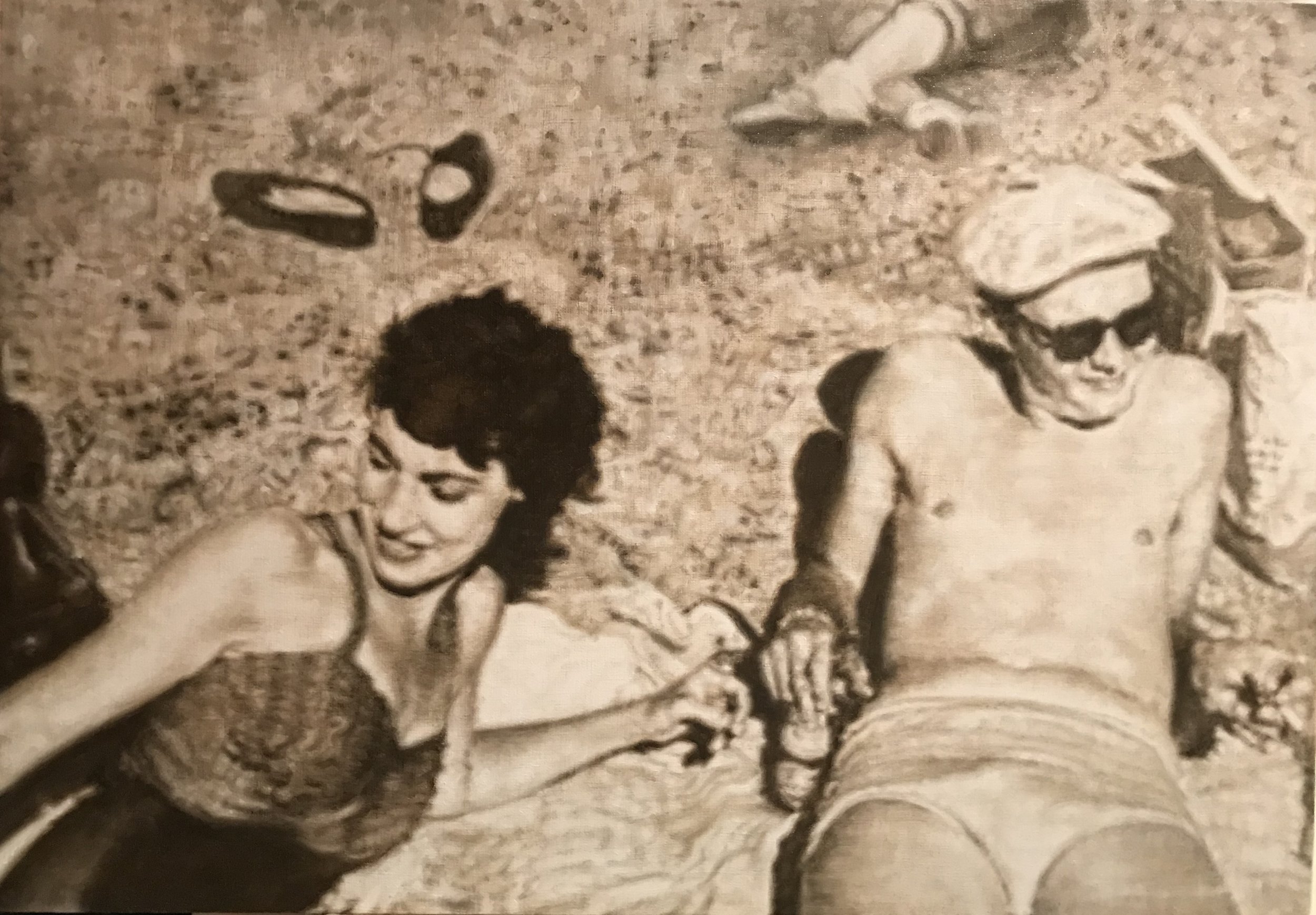Peers
Peers Embrace, 20 x 24”, oil on linen, 2018 (SOLD)
Peers Roughhousing, 18 x 26”, oil on linen, 2018 (SOLD)
Peers Redressing, 10 x 14’’ oil on linen, 2018 (SOLD)
Peers Sunbathing, 14 x 22”, oil on linen, 2018 (SOLD)
Peers on Beach, 16 x 18”, oil on linen, 2018
Smitty with Peers, 18 x 24”, oil on linen, 2018 (SOLD)
Bowman with Peers, 16 x 24”, oil on linen, 2018
Peers Relaxing, 16 x 24”, oil on linen, 2018
Johnny with Peers, 18 x 20”, oil on canvas, 2017 (SOLD)
Tent, 20 x 34”, oil on canvas, 2017
Artist’s Intention
Samuel Blatt’s latest series, Peers, is built from several thousand inherited photographs taken in Japan and California during the Korean war. This show is an attempt to represent the peer relationships of American soldiers and civilians during times of leisure and inactivity. Each image has been changed through editing. Figures and elements have been added, subtracted, and manipulated to direct or alter the meaning. This might include an arm added over a shoulder, or a figure posing in the background.
Blatt’s technique intends to lead the viewer’s eye around the image by treating parts of the painting differently. Crisp edges, contrast, and color naturally draw the eye and are withheld for the crucial moments of each piece. Thinner or thicker paint, sharp or blurred edges, and density of detail also help direct the viewer, and distinguish certain parts of painting from others. Unimportant information has been blurred, pushing the eye away from these areas. This technique shows the viewer where to look and insinuates how to feel about each section of the painting. If the entire painting is treated the same, it has no important or striking moment. Parts of the painting must die to allow others to shine brighter and have a stronger effect. If the painting is homogenous in its treatment, the painter has asserted no opinion on the subject.
During the making of this series, Blatt researched and was influenced by the cinematography of Henri Clouzot, Jean Cocteau, and Robert Wise. The two films he studied closely are Wise’s The Haunting (1963), and Clouzot’s unfinished film Inferno (1964). Wise and Clouzot used blurring and cropping to direct the eye to the important areas of the composition. Painting, a static medium, tends to avoid putting figures or objects near the borders of the frame. With the advancement of film, our relationship to the frame changed, allowing for dissection and interruption along the frame’s edge. Using blurring and cropping creates anticipation, tension, and intrigue in moments that might otherwise be dull. Blatt aims to use cinematic methods of tension to further enhance or change the narrative in his paintings.









